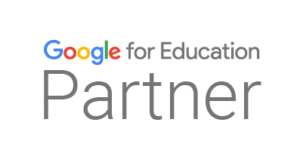In recent years, schools have faced one unpredictable disruption after another. From heatwaves to flash floods, changing climate is challenging the traditional classroom and effecting interactive learning environments. Just as institutions begin adapting to the heat, monsoon rains bring another wave of chaos. Water-logged streets, traffic jams, power outages all impacting children’s access to education.
So, what’s the solution when nature doesn’t follow the schedule?
Hybrid Interactive Learning is stepping in as the safety net.
By blending online and offline learning, hybrid classrooms offer flexibility schools once lacked. More than just a backup plan, this model redefines how learning continues in an uninterrupted, engaging, and safe way.
When Schools Close, Learning Doesn’t Have To
Every monsoon, school buses struggle through water-logged roads. Parents worry about safety, while teachers juggle lesson plans with cancelled classes. In extreme heat, schools close their gates to protect student health. The result? Disrupted schedules and compromised learning.
But hybrid education offers stability during these times. Students log in from safe spaces. Teachers deliver lessons in real-time. Classwork, attendance, even assessments continue without pause.
Interactive learning platforms ensure lessons are not only delivered but understood.
A Reliable Model in an Unreliable World
Hybrid learning isn’t just a response to challenges but a forward-thinking approach. It’s a model built for resilience. Even when school buildings shut, the classroom never closes. This seamless shift between in-person and virtual ensures undisrupted learning.
Students remain engaged, motivated, and productive. With digital tools tailored for interactive learning, they ask more questions, explore new ideas, and stay on track.
The point is this model isn’t designed solely for emergency situations. It prepares children for the digital-first world they’re growing into.
The Growing Fear of Not Going Hybrid
Schools still dependent on traditional systems are falling behind. When weather disrupts operations, they hit pause. Meanwhile, hybrid-enabled schools keep going.
This inconsistency is widening the education gap. Students in hybrid systems show improved retention rates and better academic consistency. They learn continuously while their peers wait for schools to reopen.
Can schools really afford to be left behind?
Parents are beginning to ask the same question. They want stability, not unpredictability. Hybrid education ensures that learning continues regardless of rain, heat, or any other challenge.
More Than Just a Buzzword – Interactive Learning
Interactive learning is a key feature that lies at the core of successful hybrid models.
Forget the static PDFs and one-way lectures. Today’s platforms offer dynamic sessions, real-time doubt resolution, and gamified lessons. Teachers can track progress live, while students experience deeper engagement.
This shift leads to improved retention rates. When students engage, they retain knowledge; when they participate, they thrive. Hybrid learning delivers content and, at the same time, builds curiosity.
Interactive learning ensures no child is just watching; it ensures they are participating actively.
But What About Safety and Security?
Digital spaces need to be as secure as physical ones. As more schools go online, data privacy and safe digital practices are non-negotiable.
That’s why secure school networks are a priority. From encrypted logins to protected classroom platforms, today’s hybrid systems prioritize student safety both online and offline.
Parents need reassurance. Schools need control. A well-implemented hybrid environment provides both.
Teachers Are Empowered, Not Replaced
A common misconception? Hybrid means technology replaces teachers.
Not true. It enhances their ability to teach. Educators use smart tools to personalize lessons, track progress, and communicate better with parents.
It’s not about replacing blackboards. It’s about expanding them. Teachers become facilitators of immersive, interactive learning experiences.
The Psychological Advantage of Continuity
Every unexpected school closure doesn’t just impact academics. It affects a child’s mental rhythm. Structure, routine, and purpose play vital roles in student well-being.
Hybrid learning maintains that structure. This consistency fosters greater engagement and motivation, which are essential for long-term academic success.
Is Your School Future-Ready?
The future doesn’t wait. And it certainly doesn’t warn us. Whether it’s rising temperatures or heavy monsoon showers, schools need systems that adapt instantly. Hybrid education is no longer optional and is now essential.
Institutions that hesitate may soon find themselves chasing the curve. Those that embrace hybrid models are creating resilient, dynamic learning ecosystems. Increased learning effectiveness, better retention, and undisrupted education are all possible. But only if we act now. Because while schools can close their gates, learning should never stop.
In a world where climate and chaos walk hand in hand, hybrid learning offers certainty. For schools that want to lead, not follow, this is the time to evolve. Now is the time for schools that choose to lead, not follow, to evolve.




 1st Floor, H-31, Sector 63,
1st Floor, H-31, Sector 63,